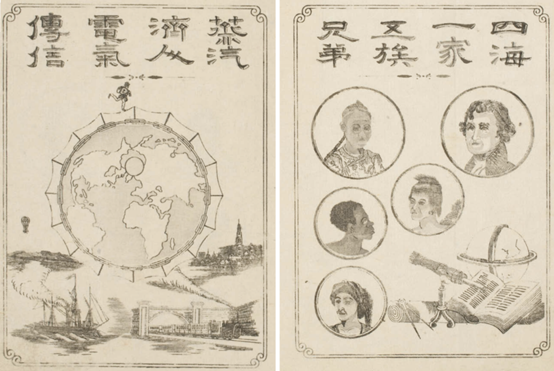*日本語の記事はこちら
Hitomi Sano, a member of CCRC, wrote an article about the research field of CCRC in the newsletter of the Japan Society for the Comparative Study of Civilizations, No. 80, the February 2024 issue, the memorial special feature dedicated to Professor Shuntaro Ito.
The following article was translated from the Japanese article.
The Digital Architecture from Comparative Civilizations
Hitomi Sano
Keio University has played a significant role in developing the Internet since its early days. In recognition of the global expansion of the digital society, the Cyber Civilization Research Center (CCRC) was established in 2018 by Dr. David Farber and Dr. Jun Murai, co-founders called the “grandfather” and “father” of the Internet.
Yukichi Fukuzawa, who founded Keio University in 1858, pioneered advocating reform in Japan, facing Western civilization for the first time. His idea about what Japan should be in world civilizations and democracy, with his enriched knowledge, has profoundly influenced modernizing Japan.
Therefore, in the context of comparative civilizations, Keio University has once again become a crucial knowledge field on the emergence and transitional phase of a digital civilization.
The Western scientific civilization centered on the Western world was triggered by the Industrial Revolution by controlling observable physical laws and automating certain aspects of mass production. In contrast, cyber civilization is characterized by creating massive digital infrastructures that govern the global transmission of invisible digital data. Thus, cyber civilization can be described as a ‘planetary civilization’— the Earth is covered by an immense digital architecture that controls the digital data flow.
Quite a few digital developers have been actively working in the information industry. Besides, every user contributes to maintaining this large-scale decentralized digital architecture in various ways. Therefore, each holds diverse impressions of the Internet.
While the development of the ARPA Net since 1969 is often emphasized as its prototype of the Internet, it is crucial to review that UNIX was developed at Bell Labs in the same year. Ten years later, as part of open-source software deployment, the University of California, Berkeley incorporated Internet-related features into the operating system. It became a foundational platform of network technology and applications such as electronic mail.
In this way, information technologies, developed over a short history, have complicated connections. Additionally, this evolution has had widespread impacts on global society. Understanding the architecture that serves as the source of the cyber civilization within this brief history is difficult. Therefore, comparative civilizations, enabling a macroscopic analysis, can effectively elucidate the structure of this information civilization.
One of the CCRC Center Directors, Dr. Farber, played a crucial role in developing the academic network CSNET (Computer Science Network) in 1981, connecting computer science departments across U.S. universities. CSNET was the prototype of the National Science Foundation Network (NSFNET), which became the backbone of the Internet. In 1986, the Japanese network JUNET (Japanese University Network) and CSNET achieved international connectivity. JUNET was led by another CCRC Center Director, Dr. Murai.
Dr. Murai was entrusted to manage the M-server, the only root server in Asia among the thirteen worldwide, by Dr. John Postel, one of Dr. Farber’s disciples. Subsequently, to encourage participation from Japan and Asia in U.S.-centered Internet operations, Dr. Murai proposed network operations such as regional registries of IP addresses and top-level domain structure. He contributed to forming a globally distributed computing environment with no central authority by advocating for initiatives such as the multilingualization of the Internet and the expansion of addresses through modifications to the IP protocol, IPv4 to IPv6.
From the perspective of comparative civilizations, the development of the Internet represents a transition from localized human connections in the physical world to creating a new space connecting people globally through decentralized networks by integrating logic and engineering in digital technology.
More importantly, connecting the world from Japan was the direct factor in moving departure from Western scientific civilization and transitioning towards a global civilization.
AI, SNS, VR, blockchain, Web3, metaverse, and other digital technologies are not independent entities but components over a global-scale Internet architecture as the expression of digital intelligence. To lead a genuinely peaceful digital civilization, we must understand these digital technologies comprehensively. Therefore, inheriting the panoramic perspective proposed by Dr. Shuntaro Ito, a pioneer of comparative civilizations, is indispensable.

Quotation: “西洋事情Seiyo Jijou” (Conditions in the West), First Edition, Volume One, Frontispiece, 1866 Keiō 2nd Year, by Yukichi Fukuzawa
This picture features a futuristic world envisioned by Fukuzawa, along with ink paintings of faces representing the five races. It is accompanied by the words “Steam, Helping people, Electricity, Communication” and “Four Seas, One Family, Five Tribes, Brothers.” The message would suggest that humanity is one big family, even across the seas; by utilizing scientific and technological advancements, the world would be interconnected, and people would save others, akin to caring for family members. Additionally, the image of a messenger running along the wires that encircle the Earth anticipates the emergence of protocols swiftly carrying information across borders.
 Contact us
Contact us